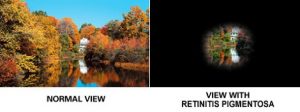Today I had a very rough encounter with a shop assistant. A very quizzical, judgemental encounter….. But rather than be negative, this got me thinking; unless you have a visual impairment or live within close proximity to someone who does, this may be a common misconception that anyone of my readers may also hold.
So here in a series of blogs I am going to look at busting some myths and misconceptions. Now as my blog is all about me (selfish I know!) what I write here works for me and is my point of view. Sight loss has a MAHOOSIVE variant in the many that it affects, so what works for me may not work for another. After all VIs (Visually Impaired) are unique Human beings with their own individual characteristics.
I personally love to shop! Muse through rails of clothes, feeling the different texture. I find some shops easier than others, I also have my staple ‘go to’ shops for my essentials.
When I trained with my guide dog (both of them) it was explained to me about how a dog works in certain environments. How a dog works in a supermarket for example is different to how they work in a clothes shop. And most of this is down to how we as humans move around in said shops.
Mostly because of how the shops themselves lay out their stock. A supermarket is quite regimented, with aisles and shelving. Where as clothes shops work with rails, displays and a more ‘hap-hazard’ movable approach.
So, when in a clothes shop I do not ‘work’ my guide dog Fizz. By this I mean I do not hold her harness handle and ask her to guide me around….. Manly because we wouldn’t get past the first row of clothes as the space between rails isn’t wide enough for Fizz to work properly!
So once inside a clothes store I will simply hold her lead, I will keep her on my left hand side and I will use my right hand to feel my way around the store, feeling out mostly for the ends of rails that could cause me issues if I bump them.
The stores I frequent regularly are used to me and Fizz, they even know that at times she will just lay down if I am spending too long looking at a section! After all she is a dog; she has no need or interest in clothes!
But when we go into a different shop (which doesn’t happen often) the other shoppers (as today) and the staff appear amazed by it.
Today’s encounter saw me being asked to leave. And this was because the store assistant believed that I was not VI and that my guide dog was just a pet. (Despite her harness and all her ‘uniform’ stating she is just that)
The store assistant had watched me move around, touching the clothes, but that my dog was just walking behind me. I did explain the main reason for this was because the space between the clothes was only just big enough for me to walk in, let alone Fizz to walk beside me.
I explained how I am trained with Fizz and how dropping harness means she doesn’t have to be responsible for trying to navigate in such an unnavigable space. To which the store assistant became very interested and was then asking questions out of interest not judgement.
Another point to make is that clothes shopping isn’t a rushed affair (not for me anyway) So I take my time, I can focus using what little sight I have left on navigating my way around. It’s not ideal and at times it doesn’t always work. But it is making the best of the situation.
For me, I prefer to shop alone for clothes, not be rushed or concerned with someone else getting bored or fed up with me. So this is how I work around it. It’s a quirk and it is following my guide dog training; which means I can’t be the only person who does this.
After all VIs shop, VIs go out alone and VIs above all else, have their own minds.
Personally I would not consider going clothes shopping using my long cane. As most clothes are hung on rails a cane could alert me to the floor being clear, but won’t alert me to the tops hanging from a rail (if the lighting isn’t right for me to see) And for this reason I do understand why some VIs prefer to shop with others.
So, I hope you have enjoyed this Mythe bust? Feel free to comment below on this subject or other myths you may have questions about.










